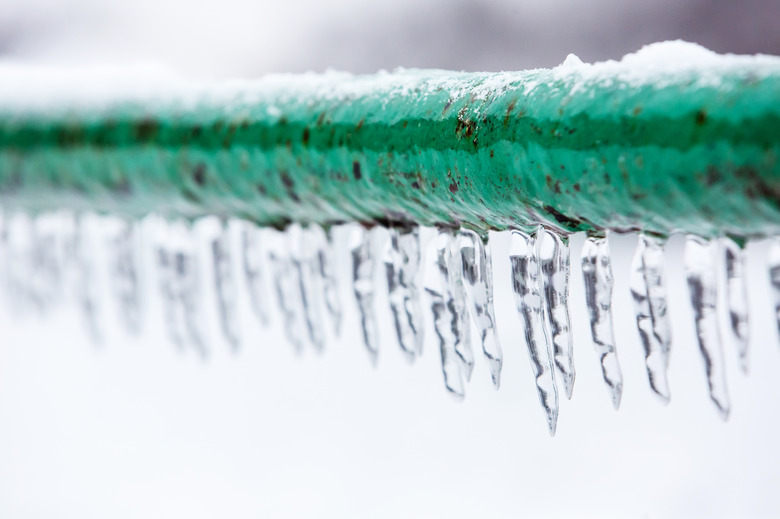What Causes A Lower Freezing Point?
Two kinds of changes, one chemical and one physical, can affect the freezing point of a substance. You can lower the freezing point of some liquids by mixing a second, soluble substance into them; this is how road salt keeps melt-water from refreezing in cold temperatures. The physical approach, changing the pressure, can also lower a liquid's freezing point; It can also produce unusual solid forms of a substance not seen at normal atmospheric pressure.
TL;DR (Too Long; Didn't Read)
Antifreeze lowers the freezing point of water, keeping it liquid at low temperatures. Both sugar and salt will do this as well, although to a lesser extent.
When Molecules Freeze
Electrical forces between molecules determine the temperatures at which a substance freezes and boils; the stronger the forces, the higher the temperature. Many metals, for example, are bound by strong forces; the melting point of iron is 1,535 degrees Celsius (2,797 degrees Fahrenheit). The forces between water molecules are considerably weaker; water freezes at zero degrees C (32 degrees F). Solvent mixtures and pressure variations reduce the forces between molecules, lowering the freezing point of liquids.
Mixing it up
By mixing one liquid with another compatible substance, you lower the freezing point of the liquid. The substances must be compatible to ensure complete mixing; oil and water, for example, separate and will not change the freezing point. A mixture of table salt and water does have a lower freezing point, as does a water-alcohol mixture. Chemists can predict the freezing-point temperature difference by applying a formula that takes into account the amounts of the substance involved and a constant associated with the second substance. For example, if you calculate for water and sodium chloride and the result is -2, that means the mixture's freezing point is 2 degrees C (3.6 degrees F) lower than for pure water.
Taking the Pressure Off
Changes in pressure can raise or lower the freezing point of a substance. Generally, pressures lower than 1 atmosphere lower the temperature at which a substance freezes, but for water, a higher pressure gives a lower freezing point. The force from a pressure change figures into the molecular forces already at play in a substance. For water at low pressures, vapor directly turns to ice without becoming a liquid.
Amazing Hot Ice
Water has several solid phases, each observed at different amounts of pressure. Standard ice, which scientists call "Ice I," exists at atmospheric pressure and has a characteristic hexagonal crystal structure. At temperatures below minus 80 degrees C (minus 112 degrees F), cubic ice crystals can form from vapor at 1 atmosphere of pressure. At high pressures, exotic types of ice form; scientists identify them as Ice II to Ice XV. These forms of ice can remain solid at temperatures exceeding 100 degrees C (212 degrees F) — the boiling point of water at 1 atmosphere of pressure.
References
Cite This Article
MLA
Papiewski, John. "What Causes A Lower Freezing Point?" sciencing.com, https://www.sciencing.com/causes-lower-freezing-point-11366/. 25 April 2018.
APA
Papiewski, John. (2018, April 25). What Causes A Lower Freezing Point?. sciencing.com. Retrieved from https://www.sciencing.com/causes-lower-freezing-point-11366/
Chicago
Papiewski, John. What Causes A Lower Freezing Point? last modified March 24, 2022. https://www.sciencing.com/causes-lower-freezing-point-11366/
